FEATURE
Approximately 45 minutes northwest of Guadalajara, along a mostly two-lane highway lined with 7-Elevens and transient tamale stands, past sage-scented hectares of spiky blue agave, burning sugar cane fields and improvisational adobe villages topped with satellite dishes and laundry lines, framed by dusty blue mountains, lies the town of Tequila, Mexico.
On the final stretch of road, whitewashed walls colored with hand-painted ads for pollos al carbon and Coca-Cola frame open-air cafés, where locals in pastel shirts and cowboy hats gather at dawn for a cup of instant coffee, thick with sugar and Nestlé Coffee-mate. Briefly, these relics of real life give way to souvenir stands selling decorative bottles of tequila and other tourist trinkets that underscore the contradictions of a nearly 500-year-old town in transition.
To the more than one and a half million inhabitants of cosmopolitan Guadalajara (Mexico’s second largest city), Tequila—population 40,000—is a diminutive neighbor known as the setting of the 2007 telenovela “Destilando Amor” and for its modern folklore. Growing up in Guadalajara, 27-year-old Pedro Andres Barba understood it as the place where oil tankers from Las Vegas came to fill their drums with tequila that would later spew from casino bar taps. And, in fact, to most Americans tequila is exclusively a beverage, usually associated with a night they would love to forget and can’t quite remember. The Mexican government views the town with slightly more reverence, having ordained it a Pueblo Mágico in 2003. It was also named a World Heritage Site in 2008. Beneath all these packaged preconceptions, however, lies a complex patchwork of history, religion, modernity, politics and power, often driven by the mythical spirit that—along with salt and lime—has made the town’s name a rallying cry for partiers the world over.
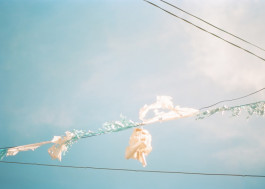
Far from the clubs of Cabo San Lucas, quotidian life in Tequila is marked by typical small-town rhythms: A miniscule bread truck makes its morning rounds along cobblestone streets, dodging Volkswagen Bugs and the town’s garbage truck, which incongruently announces its presence by projecting Vivaldi from rooftop speakers. Abuelas stand in the doorways of simple but well-kept, sun-bleached homes as children in school uniforms—the proverbial plaid skirt or black pants and tie—pass, and the narrow sidewalks become animated with papaya stands as a rooster crows. A rooster is always crowing somewhere in Tequila.
Here, days still revolve around the church square, where cafés and benches encircle Our Lady of the Purísima Concepción, an 18th century Catholic church. At 7:30 in the morning, stray dogs chase each other across the expanse as residents gather in anticipation of the 8 a.m. mass. Rodrigo Castañedo Barnaz leans against an angel statue, having just finished his shift as a church custodian. He’s lived and worked in Tequila a long time and has the callused hands and five kids to prove it. Nearby, the town market’s smoking taco stands and open-air butcheries slowly spark to life, perpetuating a multi-generational cycle of commerce and community.
The first documented mentions of civilization in the Tequila region reference a pre-Hispanic settlement occupied by the Chichimeca, Otomí, Toltec and Nahua tribes in nearby Teochtinchán. The town was surrendered during the Spanish Conquest of the Aztec Empire, and the current site of Tequila—originally the village of Santiago de Tequila—was founded in 1530 by Franciscan monks who populated it with locals from the Tequila Volcano. For the next 300 years, the settlers and natives engaged in a continuous dance of rebellion and forced submission that definitively infused Catholicism into the town’s DNA.
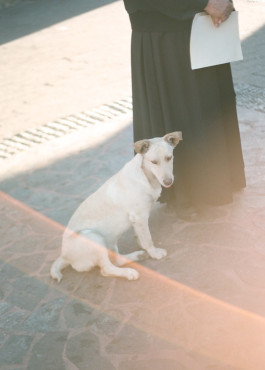
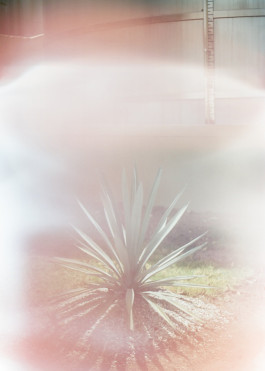
Threads of this history still serve as the warp of the town fabric. The church continues to hold four masses every weekday and an impressive 20-plus on Sundays, vestiges increasingly infiltrated by modernity, like a parishioner’s cell phone interrupting the homily. To the younger generation—explains Paola Villanueva Bidaul, a Guadalajaran who studied the impact of religion on contemporary Mexican women aged 18 to 25—church has become more of a social event than a religious experience. The women attend mass mainly to please their parents and hang out with friends; Catholic values don’t influence their decisions to move in with boyfriends, drink or otherwise live their lives.
This intersection of past and present is also evident in the teenage boys who pause in front of the church’s portal to cross themselves and the girls and grandmothers who linger in front of its bulletin board to review marriage announcements. The rites of passage that inform childhood dreams, these traditions also underscore Tequila’s lack of opportunity, which often leads to a limited life that outsiders like to view through the rose-colored lens of simpler, slower times. But new prospects—along with tour buses and sushi restaurants—are dawning in the town. They come in the form of Tequila’s amulet: the agave plant that adorns nearly every edifice.
Distinguishable by its spiky, fleshy leaves, the blue agave has a long regional history. According to prevalent folklore, Aztecs used it to create an ancient version of tequila that was drunk during rituals and orgies. The Nahuatl, meanwhile, worshipped the plant as the earthly incarnation of the goddess Mayaheul. Terrestrially, they used it to make mats, clothing, rope and paper, and mescal crudo. Around 1550, this mildly alcoholic beverage became—under the supervision of Spanish conquistadors—a stronger liquor renamed mezcal wine or mezcal tequila: North America’s first distilled beverage. And in 1600, when Don Pedro Sanches de Tagle opened Mexico’s original tequila factory, the beverage also become the continent’s first commercially produced alcohol. By the mid 18th century, Mexico’s first official distilleries were in operation in Tequila, and when the alcohol arrived in the U.S. in 1873 its name had been shortened to, simply, tequila.
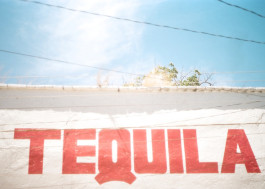
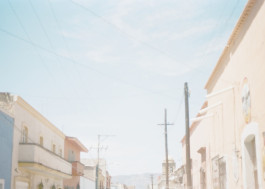
With the advent of World War II, due to a scarcity of European spirits, the liquor gained a greater foothold in the States. This renown became international when the Olympic games were held in Mexico City in 1968. Between 1995 and 2005, a tequila boom in the U.S. more than doubled demand and production, further developing Tequila’s industry. More recently, increased requests for high-end tequilas from the U.S. and Europe—along with growing popularity in developing markets, like China, Japan and Brazil—have prompted the advent of specialty distilleries, such as Destiladora del Valle de Tequila Casa Maestri, that produce high-end tequila exclusively for export.
A ten-minute drive from the city center, off the main highway and down a dirt road circumscribed by makeshift homes and roaming livestock, Destiladora del Valle de Tequila Casa Maestri is currently distilling a new brand of tequila named Santera. Spanish for “saint maker,” Santera debuts this fall in three iterations: blanco, reposado and añejo, and retails for around 50 USD. The brand is aimed solely at the international market and its differentiating appeal is an elevated level of craftsmanship that combines century-old production methods with modern techniques. This practice falls under the purveyance of master distiller Agustín Sánchez, who has worked in the industry for over 20 years.
As the master distiller, Agustín trains workers in a complex distillation process that starts with a 40-ton horno (a traditional stone-lined brick oven), which steam roasts four- to six-year-old agave piñas for 36 to 54 hours, turning them into a caramel-colored mash of softened fibers and pulp. The mash is carried up a conveyor belt to the mollino (mill), which extracts a sugar-concentrated juice from the fibers. The juice is then combined with naturally occurring yeast and fermented for 48 to 60 hours—significantly more time than many mass-produced tequilas, which often ferment for as little as ten hours. Longer fermentation, Agustín explains, results in more subtleties and a mellower flavor. The other signifier of elevated quality is the aging process. Each of Santera’s tequilas will be aged to imbue it with a particular essence. Blanco will age for eight months, reposado for 16 months and añjeo for 22 months.
Small batch or mass market, all tequila production is controlled by the Tequila Regulatory Council, a governmental body consistently described as a “sort of mafia.” This mafia ensures that, like champagne, tequila maintains its denomination of origin. It can only be produced in certain areas of Mexico, using certain methods and particular varieties of the agave plant, principally the blue agave. It also means that politics are involved and, inevitably, leads to a discussion of the current state of Mexico’s more famous mafia: its drug cartels.
As the cultural capital of Mexico, Guadalajara and the state of Jalisco have, up until the last year, been largely spared the horrific violence of the country’s six-year-old drug war, which has killed over 70,000 people and as of February 2013 caused the disappearance of over 26,120. Nearly every resident blames the violence on former president Felipe Calderón, who served from 2006 to 2012, during which time he instigated an aggressive battle against the cartels by taking what Paola explains as “the Pablo Escobar approach,” meaning he cut off the cartel heads leaving a power vacuum.
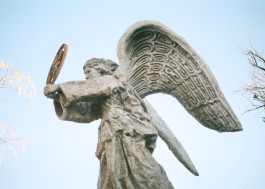
The result has been the rise of new gangs—such as the La Familia Michoacana, which she describes as “like ‘Breaking Bad,’”—without the peaceful alliances or standardized moral codes of the former ones. These mutinous groups initiate new rivalries with established cartels, like Guadalajara’s notorious Caro Quintero. There is also the emergence of Los Zetas, originally cartel bodyguards trained in Israel. They got tired of playing second fiddle, Paola says, and became contractors more interested in power and territory than the economics of the drug trade. And of course you can’t discount El Chapo Guzman, the head of the Sinaloa cartel, who is considered by the U.S. Department of the Treasury to be “the most powerful drug trafficker in the world.” He’s been in the wind since a 2001 prison break and everyone believes he is hiding somewhere else—one source for this article said Chihuahua, another Durango—but nearly all believe he is protected in some way by the government. Despite the complexity of this seemingly escalating war, Paola senses that the Mexican populace is reaching its breaking point. “People are tired of the same old things,” she insists. “We are tired of being submissive. We are not going to explode, but we are aware and we are looking for a new solution.”
This solution may prove difficult to find. According to the American consulting firm Southern Pulse’s 2012 report, Jalisco as a whole and Guadalajara, in particular, are poised to become the drug war’s new battlegrounds. This ominous prophecy is supported by the testament of Juan Marcel Delgadillo Hernandez. A former farmer in Tala, a village just outside of Tequila, Juan is also the proprietor of Las Tinajitas de Tala, a picturesque section of river situated in the countryside and fed by mountain hot springs.
Juan first came to Las Tinajitas at five years old, when he, his brothers and his father would farm the land, waking at 3 a.m. to till the field with a horse-drawn log. They would work around the clock, sleeping only one hour per 24. Now Juan is employed at the nearby sugar factory and says that it is no longer safe to go out before dawn because of the danger posed by the cartels. He, too, vehemently blames President Calderon for the violence, which has included four shootouts in Tala in the last four months, most recently a three-hour-long battle between the narcos and the police, followed by a midnight raid by the authorities, who came into Tala homes and took over 100 residents to prison.
To an undiscerning eye, the police presence in Tequila seems scarce. During the day, cops appear only occasionally on foot in the city center or passing through in a truck. It is only after dark that an undercurrent of peril emerges, evidenced by the flat-bed pickups that cruise through carrying fleets of Federales with automatic rifles. Ricardo Villalobas Trigo (Ricky), a young waiter in Tequila, explains the situation succinctly: Tequila “belongs” to a drug cartel in Jalisco. There isn’t really a police force; the Federales are corrupt and work for the cartels, which employ them to extort local businesses, demanding protection money. If an owner refuses to pay the narcos, his or her business is burned. In the past year, Ricky recounts, the cartel killed 40 people in a four-hour-long gunfight at a nearby gas station. The residents resist when they can, which is why Mexico has been gripped by civil war for the past 60 years. The president has a lot to do with this, Ricky explains, but unlike others he isn’t referring to President Calderon, rather the current president: Enrique Peña Nieto. The new president is also corrupt, he confirms, citing the case of Florence Marie Louise Cassez Crepin as evidence. Florence is a French national who was convicted of working with the violent Mexican kidnapping gang Los Zodiacos. President Nieto freed her just months after coming into office.
Born in Mexico and raised in the United States, 21-year-old Ricky possesses both an insider’s information and an outsider’s objectivity. He was brought to America by his parents at six months of age—first to Arizona and then to the San Fernando Valley, where he grew up as an undocumented immigrant. As a teenager he struggled with drugs and gangs, but he graduated from high school and was on a good track until, stymied by his lack of papers and therefore opportunity, he got into trouble, was eventually detained by authorities and given the option of deportation or voluntary departure—the latter, which he chose, allows for the future possibility of obtaining a U.S. work visa. Although his family is originally from the Sinaloa region, Ricky landed in Jalisco about one year ago because his mother had relocated here after her mother passed away and left her a home in the area. Ricky likes Tequila, he says, because the people are “generous, loving and cool.” But, he discloses, they struggle a lot. “It’s easier to make it in the U.S.,” he clarifies.
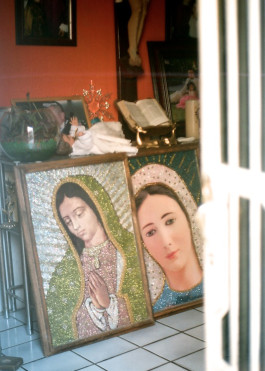

Increased tourism means that essentials, like food, are more expensive in Tequila than Guadalajara, and it’s not unusual for citizens to head to the nearby jungle with machetes to supplement their meals when money falls short. The quality of life is not as good as in the States because there is no help from the government. Here, they don’t give out food stamps or help with kids, Ricky says. Even public education requires parents to pay an inscription fee, which means that often teenagers have to quit school to work. He paints a typical picture of a family of five: mom is a homemaker, dad works fulltime and three kids go to school. For rent, utilities, and school fees alone, the cost is around 1,500 pesos per week. Contrast this to a 2011 survey by the American Chambers of Commerce of Mexico placing the average salary in the tourism sector at 5,000 pesos (approximately 382 USD) a month, and the purse strings draw. Ricky works at one to Tequila’s newer and nicer restaurants, so his meager salary is supplemented by tips. His tips are better than most, he notes, because he speaks English—still a rarity in Tequila—and is friendly. The upside to Tequila, he observes, is that in a lot of ways daily life here is less complex.
There isn’t a movie theatre so for fun he and his friends play pool or head to the lavados, a portion of the river where the townspeople used to wash their clothes. Ricky and his contemporaries go there to drink beer and swim. Or they head to La Toma de Tequila, the bottom of the Rio Grande Valley where the river pools and the trees are heavy with bananas and guavas. They also like to drink tequila—don’t let anyone fool you, Ricky asserts, everyone in Tequila drinks tequila. Personally, he prefers reposado.
It turns out both the town of Tequila and the beverage bearing its name are apt metaphors for Mexico itself. Each is inherently magical, with a neglected cache of charms. Each presents risks that are frequently overlooked and misunderstood. Each is often associated with corruption and depraved behavior, and holds the promise of a beautiful and vibrant future or an extremely messy one. The most likely scenario in either allegory includes all of the above.
PUBLISHED IN DOSSIER
PHOTOGRAPHY BY SAMANTHA CASOLARI
view more
FEATURE
Approximately 45 minutes northwest of Guadalajara, along a mostly two-lane highway lined with 7-Elevens and transient tamale stands, past sage-scented hectares of spiky blue agave, burning sugar cane fields and improvisational adobe villages topped with satellite dishes and laundry lines, framed by dusty blue mountains, lies the town of Tequila, Mexico.
On the final stretch of road, whitewashed walls colored with hand-painted ads for pollos al carbon and Coca-Cola frame open-air cafés, where locals in pastel shirts and cowboy hats gather at dawn for a cup of instant coffee, thick with sugar and Nestlé Coffee-mate. Briefly, these relics of real life give way to souvenir stands selling decorative bottles of tequila and other tourist trinkets that underscore the contradictions of a nearly 500-year-old town in transition.
To the more than one and a half million inhabitants of cosmopolitan Guadalajara (Mexico’s second largest city), Tequila—population 40,000—is a diminutive neighbor known as the setting of the 2007 telenovela “Destilando Amor” and for its modern folklore. Growing up in Guadalajara, 27-year-old Pedro Andres Barba understood it as the place where oil tankers from Las Vegas came to fill their drums with tequila that would later spew from casino bar taps. And, in fact, to most Americans tequila is exclusively a beverage, usually associated with a night they would love to forget and can’t quite remember. The Mexican government views the town with slightly more reverence, having ordained it a Pueblo Mágico in 2003. It was also named a World Heritage Site in 2008. Beneath all these packaged preconceptions, however, lies a complex patchwork of history, religion, modernity, politics and power, often driven by the mythical spirit that—along with salt and lime—has made the town’s name a rallying cry for partiers the world over.

Far from the clubs of Cabo San Lucas, quotidian life in Tequila is marked by typical small-town rhythms: A miniscule bread truck makes its morning rounds along cobblestone streets, dodging Volkswagen Bugs and the town’s garbage truck, which incongruently announces its presence by projecting Vivaldi from rooftop speakers. Abuelas stand in the doorways of simple but well-kept, sun-bleached homes as children in school uniforms—the proverbial plaid skirt or black pants and tie—pass, and the narrow sidewalks become animated with papaya stands as a rooster crows. A rooster is always crowing somewhere in Tequila.
Here, days still revolve around the church square, where cafés and benches encircle Our Lady of the Purísima Concepción, an 18th century Catholic church. At 7:30 in the morning, stray dogs chase each other across the expanse as residents gather in anticipation of the 8 a.m. mass. Rodrigo Castañedo Barnaz leans against an angel statue, having just finished his shift as a church custodian. He’s lived and worked in Tequila a long time and has the callused hands and five kids to prove it. Nearby, the town market’s smoking taco stands and open-air butcheries slowly spark to life, perpetuating a multi-generational cycle of commerce and community.
The first documented mentions of civilization in the Tequila region reference a pre-Hispanic settlement occupied by the Chichimeca, Otomí, Toltec and Nahua tribes in nearby Teochtinchán. The town was surrendered during the Spanish Conquest of the Aztec Empire, and the current site of Tequila—originally the village of Santiago de Tequila—was founded in 1530 by Franciscan monks who populated it with locals from the Tequila Volcano. For the next 300 years, the settlers and natives engaged in a continuous dance of rebellion and forced submission that definitively infused Catholicism into the town’s DNA.


Threads of this history still serve as the warp of the town fabric. The church continues to hold four masses every weekday and an impressive 20-plus on Sundays, vestiges increasingly infiltrated by modernity, like a parishioner’s cell phone interrupting the homily. To the younger generation—explains Paola Villanueva Bidaul, a Guadalajaran who studied the impact of religion on contemporary Mexican women aged 18 to 25—church has become more of a social event than a religious experience. The women attend mass mainly to please their parents and hang out with friends; Catholic values don’t influence their decisions to move in with boyfriends, drink or otherwise live their lives.
This intersection of past and present is also evident in the teenage boys who pause in front of the church’s portal to cross themselves and the girls and grandmothers who linger in front of its bulletin board to review marriage announcements. The rites of passage that inform childhood dreams, these traditions also underscore Tequila’s lack of opportunity, which often leads to a limited life that outsiders like to view through the rose-colored lens of simpler, slower times. But new prospects—along with tour buses and sushi restaurants—are dawning in the town. They come in the form of Tequila’s amulet: the agave plant that adorns nearly every edifice.
Distinguishable by its spiky, fleshy leaves, the blue agave has a long regional history. According to prevalent folklore, Aztecs used it to create an ancient version of tequila that was drunk during rituals and orgies. The Nahuatl, meanwhile, worshipped the plant as the earthly incarnation of the goddess Mayaheul. Terrestrially, they used it to make mats, clothing, rope and paper, and mescal crudo. Around 1550, this mildly alcoholic beverage became—under the supervision of Spanish conquistadors—a stronger liquor renamed mezcal wine or mezcal tequila: North America’s first distilled beverage. And in 1600, when Don Pedro Sanches de Tagle opened Mexico’s original tequila factory, the beverage also become the continent’s first commercially produced alcohol. By the mid 18th century, Mexico’s first official distilleries were in operation in Tequila, and when the alcohol arrived in the U.S. in 1873 its name had been shortened to, simply, tequila.


With the advent of World War II, due to a scarcity of European spirits, the liquor gained a greater foothold in the States. This renown became international when the Olympic games were held in Mexico City in 1968. Between 1995 and 2005, a tequila boom in the U.S. more than doubled demand and production, further developing Tequila’s industry. More recently, increased requests for high-end tequilas from the U.S. and Europe—along with growing popularity in developing markets, like China, Japan and Brazil—have prompted the advent of specialty distilleries, such as Destiladora del Valle de Tequila Casa Maestri, that produce high-end tequila exclusively for export.
A ten-minute drive from the city center, off the main highway and down a dirt road circumscribed by makeshift homes and roaming livestock, Destiladora del Valle de Tequila Casa Maestri is currently distilling a new brand of tequila named Santera. Spanish for “saint maker,” Santera debuts this fall in three iterations: blanco, reposado and añejo, and retails for around 50 USD. The brand is aimed solely at the international market and its differentiating appeal is an elevated level of craftsmanship that combines century-old production methods with modern techniques. This practice falls under the purveyance of master distiller Agustín Sánchez, who has worked in the industry for over 20 years.
As the master distiller, Agustín trains workers in a complex distillation process that starts with a 40-ton horno (a traditional stone-lined brick oven), which steam roasts four- to six-year-old agave piñas for 36 to 54 hours, turning them into a caramel-colored mash of softened fibers and pulp. The mash is carried up a conveyor belt to the mollino (mill), which extracts a sugar-concentrated juice from the fibers. The juice is then combined with naturally occurring yeast and fermented for 48 to 60 hours—significantly more time than many mass-produced tequilas, which often ferment for as little as ten hours. Longer fermentation, Agustín explains, results in more subtleties and a mellower flavor. The other signifier of elevated quality is the aging process. Each of Santera’s tequilas will be aged to imbue it with a particular essence. Blanco will age for eight months, reposado for 16 months and añjeo for 22 months.
Small batch or mass market, all tequila production is controlled by the Tequila Regulatory Council, a governmental body consistently described as a “sort of mafia.” This mafia ensures that, like champagne, tequila maintains its denomination of origin. It can only be produced in certain areas of Mexico, using certain methods and particular varieties of the agave plant, principally the blue agave. It also means that politics are involved and, inevitably, leads to a discussion of the current state of Mexico’s more famous mafia: its drug cartels.
As the cultural capital of Mexico, Guadalajara and the state of Jalisco have, up until the last year, been largely spared the horrific violence of the country’s six-year-old drug war, which has killed over 70,000 people and as of February 2013 caused the disappearance of over 26,120. Nearly every resident blames the violence on former president Felipe Calderón, who served from 2006 to 2012, during which time he instigated an aggressive battle against the cartels by taking what Paola explains as “the Pablo Escobar approach,” meaning he cut off the cartel heads leaving a power vacuum.

The result has been the rise of new gangs—such as the La Familia Michoacana, which she describes as “like ‘Breaking Bad,’”—without the peaceful alliances or standardized moral codes of the former ones. These mutinous groups initiate new rivalries with established cartels, like Guadalajara’s notorious Caro Quintero. There is also the emergence of Los Zetas, originally cartel bodyguards trained in Israel. They got tired of playing second fiddle, Paola says, and became contractors more interested in power and territory than the economics of the drug trade. And of course you can’t discount El Chapo Guzman, the head of the Sinaloa cartel, who is considered by the U.S. Department of the Treasury to be “the most powerful drug trafficker in the world.” He’s been in the wind since a 2001 prison break and everyone believes he is hiding somewhere else—one source for this article said Chihuahua, another Durango—but nearly all believe he is protected in some way by the government. Despite the complexity of this seemingly escalating war, Paola senses that the Mexican populace is reaching its breaking point. “People are tired of the same old things,” she insists. “We are tired of being submissive. We are not going to explode, but we are aware and we are looking for a new solution.”
This solution may prove difficult to find. According to the American consulting firm Southern Pulse’s 2012 report, Jalisco as a whole and Guadalajara, in particular, are poised to become the drug war’s new battlegrounds. This ominous prophecy is supported by the testament of Juan Marcel Delgadillo Hernandez. A former farmer in Tala, a village just outside of Tequila, Juan is also the proprietor of Las Tinajitas de Tala, a picturesque section of river situated in the countryside and fed by mountain hot springs.
Juan first came to Las Tinajitas at five years old, when he, his brothers and his father would farm the land, waking at 3 a.m. to till the field with a horse-drawn log. They would work around the clock, sleeping only one hour per 24. Now Juan is employed at the nearby sugar factory and says that it is no longer safe to go out before dawn because of the danger posed by the cartels. He, too, vehemently blames President Calderon for the violence, which has included four shootouts in Tala in the last four months, most recently a three-hour-long battle between the narcos and the police, followed by a midnight raid by the authorities, who came into Tala homes and took over 100 residents to prison.
To an undiscerning eye, the police presence in Tequila seems scarce. During the day, cops appear only occasionally on foot in the city center or passing through in a truck. It is only after dark that an undercurrent of peril emerges, evidenced by the flat-bed pickups that cruise through carrying fleets of Federales with automatic rifles. Ricardo Villalobas Trigo (Ricky), a young waiter in Tequila, explains the situation succinctly: Tequila “belongs” to a drug cartel in Jalisco. There isn’t really a police force; the Federales are corrupt and work for the cartels, which employ them to extort local businesses, demanding protection money. If an owner refuses to pay the narcos, his or her business is burned. In the past year, Ricky recounts, the cartel killed 40 people in a four-hour-long gunfight at a nearby gas station. The residents resist when they can, which is why Mexico has been gripped by civil war for the past 60 years. The president has a lot to do with this, Ricky explains, but unlike others he isn’t referring to President Calderon, rather the current president: Enrique Peña Nieto. The new president is also corrupt, he confirms, citing the case of Florence Marie Louise Cassez Crepin as evidence. Florence is a French national who was convicted of working with the violent Mexican kidnapping gang Los Zodiacos. President Nieto freed her just months after coming into office.
Born in Mexico and raised in the United States, 21-year-old Ricky possesses both an insider’s information and an outsider’s objectivity. He was brought to America by his parents at six months of age—first to Arizona and then to the San Fernando Valley, where he grew up as an undocumented immigrant. As a teenager he struggled with drugs and gangs, but he graduated from high school and was on a good track until, stymied by his lack of papers and therefore opportunity, he got into trouble, was eventually detained by authorities and given the option of deportation or voluntary departure—the latter, which he chose, allows for the future possibility of obtaining a U.S. work visa. Although his family is originally from the Sinaloa region, Ricky landed in Jalisco about one year ago because his mother had relocated here after her mother passed away and left her a home in the area. Ricky likes Tequila, he says, because the people are “generous, loving and cool.” But, he discloses, they struggle a lot. “It’s easier to make it in the U.S.,” he clarifies.


Increased tourism means that essentials, like food, are more expensive in Tequila than Guadalajara, and it’s not unusual for citizens to head to the nearby jungle with machetes to supplement their meals when money falls short. The quality of life is not as good as in the States because there is no help from the government. Here, they don’t give out food stamps or help with kids, Ricky says. Even public education requires parents to pay an inscription fee, which means that often teenagers have to quit school to work. He paints a typical picture of a family of five: mom is a homemaker, dad works fulltime and three kids go to school. For rent, utilities, and school fees alone, the cost is around 1,500 pesos per week. Contrast this to a 2011 survey by the American Chambers of Commerce of Mexico placing the average salary in the tourism sector at 5,000 pesos (approximately 382 USD) a month, and the purse strings draw. Ricky works at one to Tequila’s newer and nicer restaurants, so his meager salary is supplemented by tips. His tips are better than most, he notes, because he speaks English—still a rarity in Tequila—and is friendly. The upside to Tequila, he observes, is that in a lot of ways daily life here is less complex.
There isn’t a movie theatre so for fun he and his friends play pool or head to the lavados, a portion of the river where the townspeople used to wash their clothes. Ricky and his contemporaries go there to drink beer and swim. Or they head to La Toma de Tequila, the bottom of the Rio Grande Valley where the river pools and the trees are heavy with bananas and guavas. They also like to drink tequila—don’t let anyone fool you, Ricky asserts, everyone in Tequila drinks tequila. Personally, he prefers reposado.
It turns out both the town of Tequila and the beverage bearing its name are apt metaphors for Mexico itself. Each is inherently magical, with a neglected cache of charms. Each presents risks that are frequently overlooked and misunderstood. Each is often associated with corruption and depraved behavior, and holds the promise of a beautiful and vibrant future or an extremely messy one. The most likely scenario in either allegory includes all of the above.
PUBLISHED IN DOSSIER
PHOTOGRAPHY BY SAMANTHA CASOLARI
view more